Sonic Attunement, Rhythmic Relationalities
closeMurmuring Matter, Sonic Attunement, Rhythmic Relationalities: Exercises in Listening to the Cosmos.
In an era marked by an awareness of the undeniable influence of planetary ecosystems on the unfolding of terrestrial narratives, a profound realisation emerges: our existence is entangled with a complex web of natural forces that transcend human control. This revelation comes at a critical juncture, as we grapple with the far-reaching repercussions of centuries of colonial and extractivist violence, both against human communities and the ecosystems that sustain them.
Colonial and extractivist violence have an epistemic and ontological dimension. They have destroyed or delegitimised cosmologies and systems of knowledge that escaped the paradigms of Modernity, cosmologies that are often very familiar with the vitality and agency of Earthly beings and matter.1 Acknowledging these processes of epistemic violence demands enhancing the social, ethical, and political instances of climate justice with epistemic justice, with recognition and revalidation of suppressed or silenced ways of understanding life on Earth.
Despite the numerous attempts to include Indigenous voices and science in climate debates, scientific, and political arenas, they are still predominantly informed by Western scientific paradigms and political structures that persist in considering viral, vegetal, animal, atmospheric, and other material forces as the results of mechanistic chains of cause-effects. The supposedly reassuring narrative that understands earthly beings and phenomena as determinate, and thus potentially predictable and controllable, fails to recognise “the unknown constituted by (...) multiple, divergent worlds, and (...) the articulation of which they could eventually be capable.”2
This unknown is what Isabelle Stengers defines as the cosmos and it is what haunts political debates “with shadows of that which does not have a political voice, cannot have or does not want to have one.”3 In her essay “The Cosmopolitical Proposal,” Stengers invites us to slow down and pay attention to these presences and their ‘murmurings,’ in order to develop a reflexive political attitude, a political effect, that reminds us that “there is perhaps something more important” that escapes the possibility of cognitive comprehension and political representation.4
In this article, we embark on a journey that explores a diversity of sound and sonic practices as modes of attuning and relating to the murmurings of the cosmos, understood as the reverberations, vibrations, and rhythms shaping and pervading landscapes at multiple scales. We understand these sound and sonic practices as ways to respond to Stengers’ Cosmopolitical Proposal. They allow the perception of positions that would otherwise not be acknowledged, thus enacting an aesthetic redistribution of the sensible that for Jacques Rancière is political at its core.5
This consideration emerged in the aftermath of Murmuring Matter: On the Cosmopolitics of Materials, a four-day event that we curated at the Jan van Eyck Academie in Maastricht in April 2023.6 The diverse practices and knowledges gathered over these four days invited the participants to slow down and attune their sensorium to the vibrational energies, material movements, and environmental rhythms of Maastricht and beyond, in an attempt to activate processes of (un)learning, exchange, and relating to and through surrounding matters and environments.7
In what follows we will analyse a number of artistic contributions to Murmuring Matter to show how various sonic and listening practices differently create the conditions for a precognitive attunement to the environment, and how attention to material and bodily rhythms can open new forms of relationalities between humans and ecosystems at multiple scales.
Sonic Attunements
In Aesthetics of the Natural Environment, philosopher Emily Brady borrows the notion of “integrated aesthetics” from Matthew Burtner, a concept that bridges the distance between the aesthetic experience of natural and cultural landscapes.8 Following her argument, aesthetic appreciation arises more from an immersion in an environment rather than from its distant apprehension. This notion of immersion is particularly relevant when thinking about the affordance of practices of attunement such as the ones that composed the four days of Murmuring Matter. Listening and attuning one’s sensorium to different environmental bodies implies considering realities via a subject body inhabiting the world. This “semantic inhabiting,” as artist and writer Salomè Voegelin describes, suggests a generative and invested participation of the subject in the world, in which the world itself is actualised through the subjective experience.9
In Murmuring Matter, the phenomenological quality of immersion was particularly powerful in three moments of the programme: a workshop that explored the ecosystem of the river Maas, a lecture performance on the hydropolitics of Pakistan, and a listening exercise in the forest. By interweaving embodied and conceptual forms of attunement, the programme attempted to create the performative multifocal apparatus of knowledge that Anna Tsing reckons necessary to pay better attention to the "overlaid arrangements of human and nonhuman living spaces, which we call 'landscapes'."10
The workshop MaasMosaMeuseMoûzeMaosMûce: a River Choreography, took place on the Maas’ riverbanks and was conceived by writers Wim Peumans and Dorien de Wit, and artists Juan Pablo Pacheco Bejarano and Maud van den Beuken. The event invited participants to engage with the Maas River in a contemplative, speculative, and embodied manner. The experience began with attendees immersing themselves in an audio piece composed of hydrophone-recorded sounds of the river's water. This audio provided a glimpse into the auditory realm that often escapes the naked ear, serving as the backdrop for the spoken narratives voiced by the workshop's authors. Interlacing cultural myths, aquatic soundscapes, a bodily experience of the river ecosystem, and a critical analysis of the cultural, political, and economic forces at stake in it, the workshop attempted to bridge the analytical and the sensorial, the verbal and the non-verbal, the cognitive and the affective.
MaasMosaMeuseMoûzeMaosMûce: a River Choreography
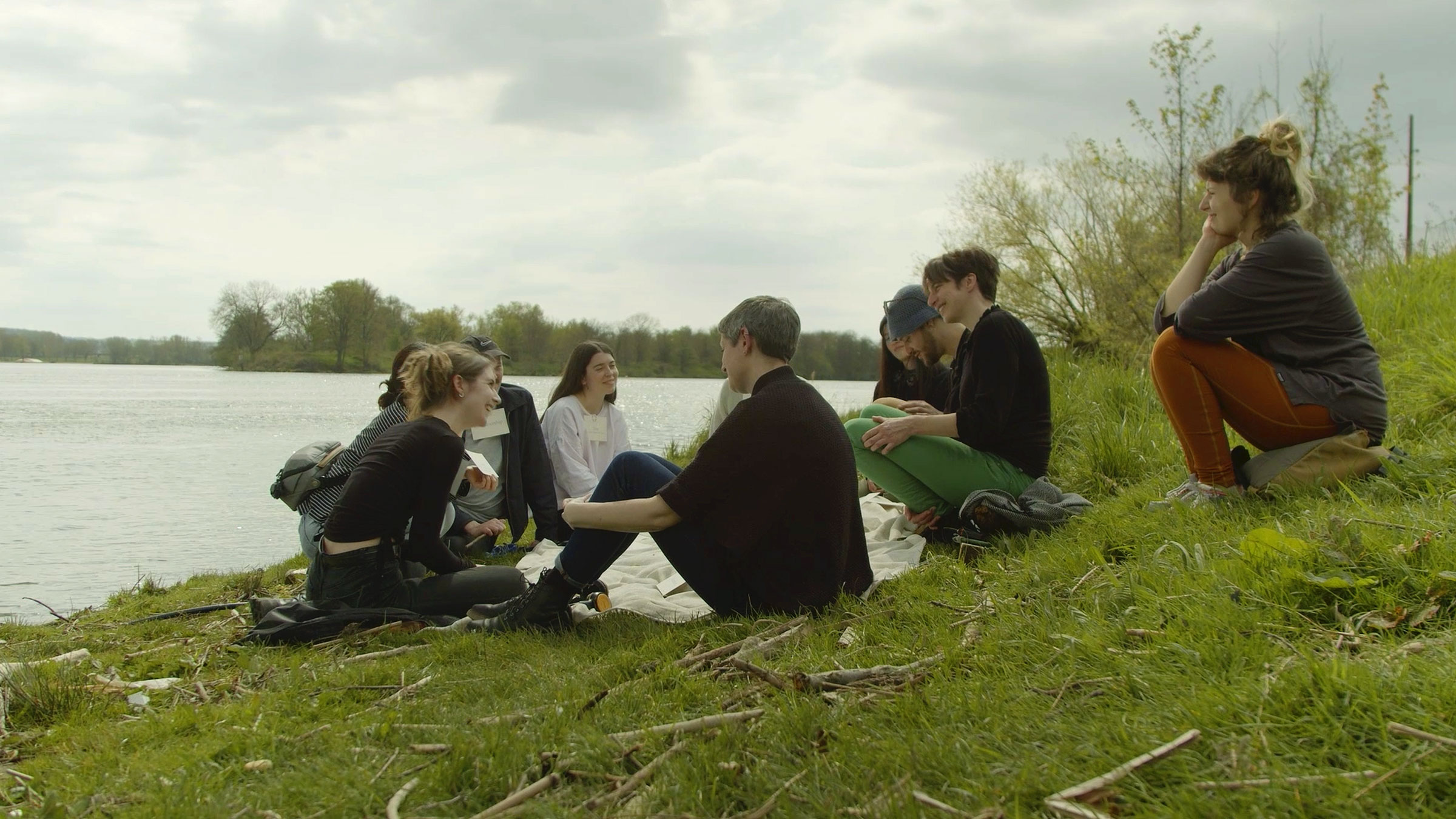
Cognitive, affective, and sensorial modes of attuning to water bodies unfolded the following day in the Jan van Eyck Academie auditorium on the occasion of A Ubiquitous Witness, a lecture performance by artist Zahra Malkani. This sonic odyssey traversed three distant aquatic landscapes in Pakistan: the Swahili Seas, the Sindhu River, and Lake Manchar. Sound was the core of Malkani’s sonic journey into the intricate dance between the Pakistani state, global capital, and geopolitical forces, observed through the scars of violent damming, drainage, and port expansions. Inspired by aniconic Islamic traditions, where the divine remains elusive to the eye, yet beckons through its presence through sound, Malkani's lecture mingled with melodies from musical instruments, voices singing and conversing, and images of distant waterbodies. The artist created a moment for collective listening that combined three distinct modes of auditory attunement: semantic listening, where cognitive understanding and interpretation reign supreme; causal listening, aimed at identifying the source without necessarily comprehending the sound; and reduced listening, a practice free from judgement or the need for comprehension that invites to a purely sensuous immersion in the auditory realm. While experimenting with the coalescence of these three different listening modes, A Ubiquitous Witness testified to a form of sonic practice in pursuit of epistemic justice, underscoring the transformative power of sound as a means to elevate underrepresented narratives, marginalised voices, and ecological sensitivities.
A Ubiquitous Witness
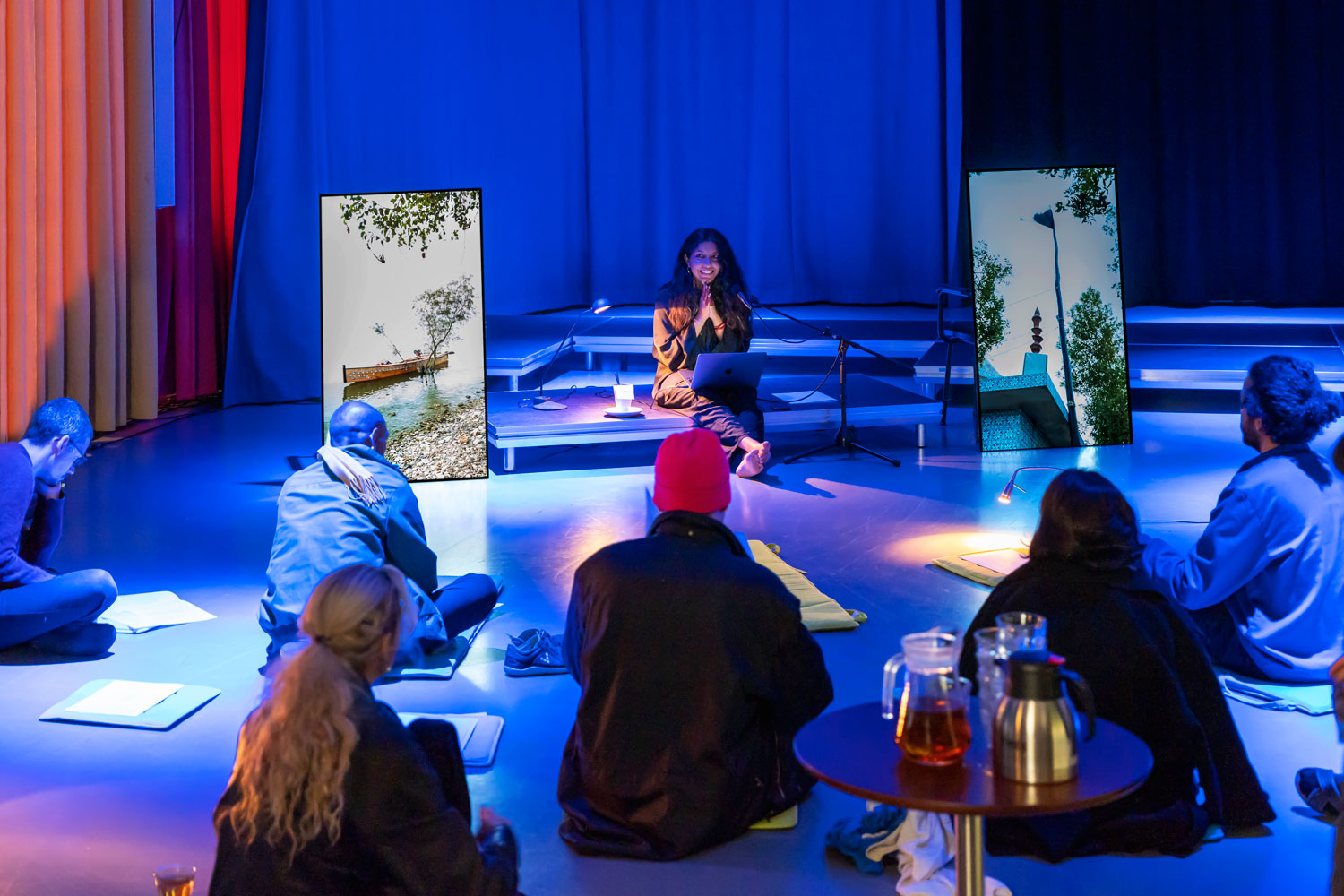
Sonic immersion has thus the capacity of enacting a redistribution of the sensible, which is political at its core.11This subtle subversive quality of sonic attunement further emerged in We are not the centre of the universe - attempts at other-than-human protagonisms, a forest workshop by artist Daniel Lie. Lie guided the attendees into an experiential journey that prompted them to question the exceptional character of human agency and to recognise the vitality of other-than-human entities. Through a series of breathing exercises held in the forest adjacent to the limestone quarry of Maastricht, participants could engage in a visual, auditory, and olfactory experience of the forest, which reached its apex when the complete omission of verbal communication allowed the forest's voices to come to the fore. After these attunement exercises, participants were invited to engage in an intimate personal exploration of the forest by freely delving into its many small and situated rhythms with a humbled sense of reverence.
By presenting a repertoire of modes of nonverbal and sensory attunement, the three contributions described above foregrounded in different and complementary ways the limitations of verbal language. The modes of attunement advanced by these contributions show how linguistic semantic constructions flatten complex experiences, overlook important dimensions of reality, and, albeit inadvertently, nurture a hegemony of the verbal in the construction of meaning, neglecting the possibility of communication to those who do not share a linguistic framework.
We are not the centre of the universe - attempts at other-than-human protagonisms
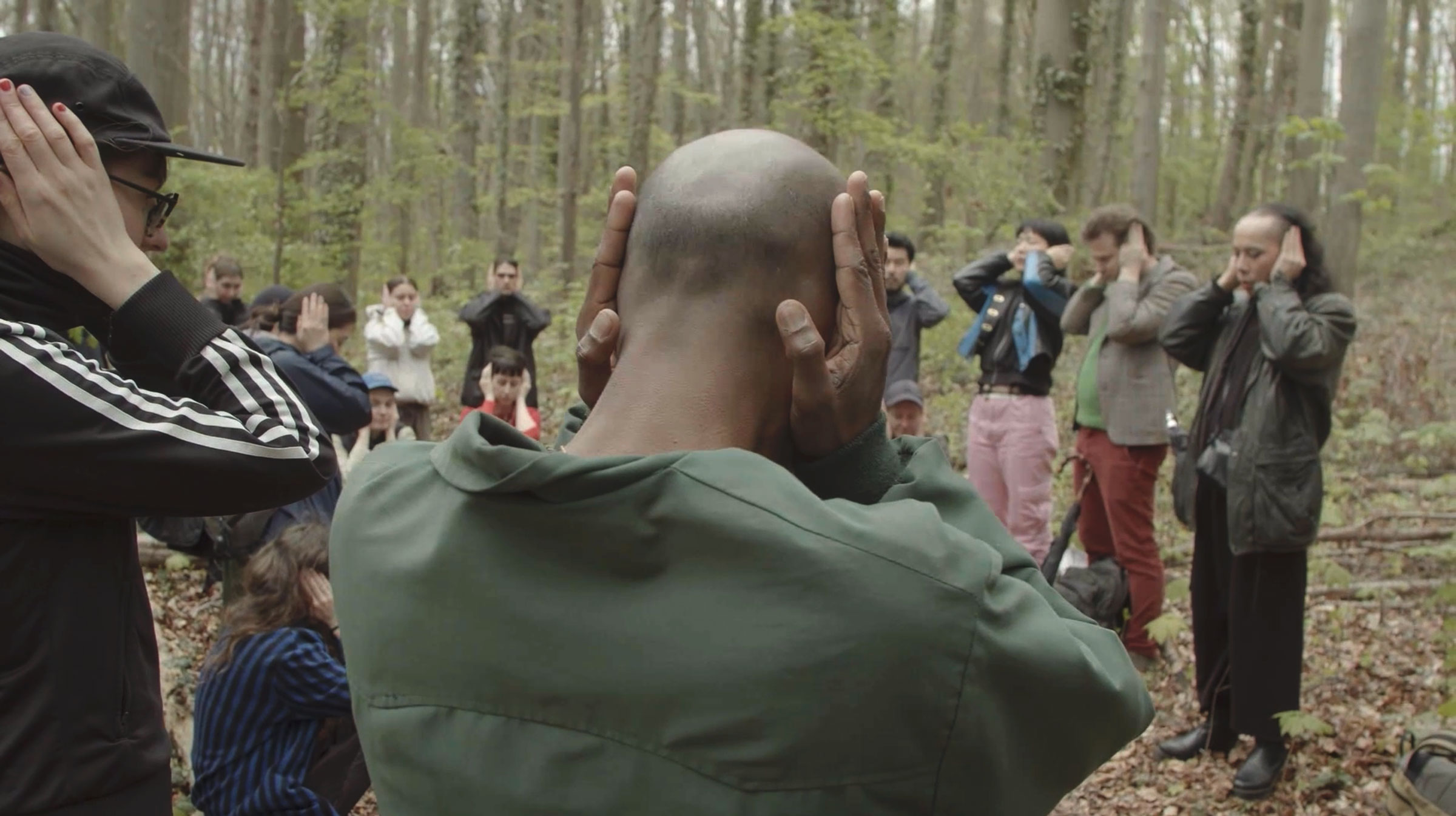
Rhythmic Relationalities
In Murmuring Matter, sonic immersion revealed how the phenomenological subject is not only human: the world is actualised through a complex relay of sensorial experiences that enmesh bodies at multiple scales, from the biological to the atmospheric, to the architectural, to the microorganic. As discussed above, practising forms of sonic attunement has a political quality insofar as it reconfigures what is perceived and what is not. Artist and theorist Brandon LaBelle associates this political affordance with the intrinsic relational quality of sound: “As forceful movements – of rhythmic and resonant intensities, of vibrational and volumetric interruptions – sound works to unsettle and exceed arenas of visibility by relating us to the unseen, the non-represented or the not-yet-apparent.”12 So far, we hoped to have established how the contributions presented above show the potential of sonic practices to attune the human body to the murmurings of the ecosystem, thus unveiling the broader cosmopolitics in which humans are immersed. We will move on to discuss emergent forms of relationality that sound can foster across material, atmospheric, microorganic, and biological realms.
“Through a bunch of different methods, I want you to talk to materials around you, have a conversation with them.” This was the invitation by writer and editor Charlie Clemoes to the participants of the city-listening walk Moving Materials with Our Ears. The starting premise was the attempt to listen to the past lives of the materials that shape our built environments; trying to imagine or unveil through sound, the deeper histories of geological formation, extraction, and construction that underpin some of the materials that the city of Maastricht is made of. Participants were invited to slow down their walking pace and produce sounds by engaging with a built environment that many of them crossed several times in a day. Tapping, rubbing, touching, and making sounds out of the contact and friction between human bodies and inanimate matter were the semantic elements of embodied dialogues that each participant had with pavements, street signs, doors, gates, plants, and various other objects encountered along the way. The participants were asked by Clemoes to record their material conversations and end the recording with a personal reflection. The reflections the artist collected witnessed the shift in the perception of the streets surrounding the Jan van Eyck Academie from a mute background upon which human life unfolds to a multi-layered archive of histories co-determined by humans and materials.
Moving Materials with Our Ears
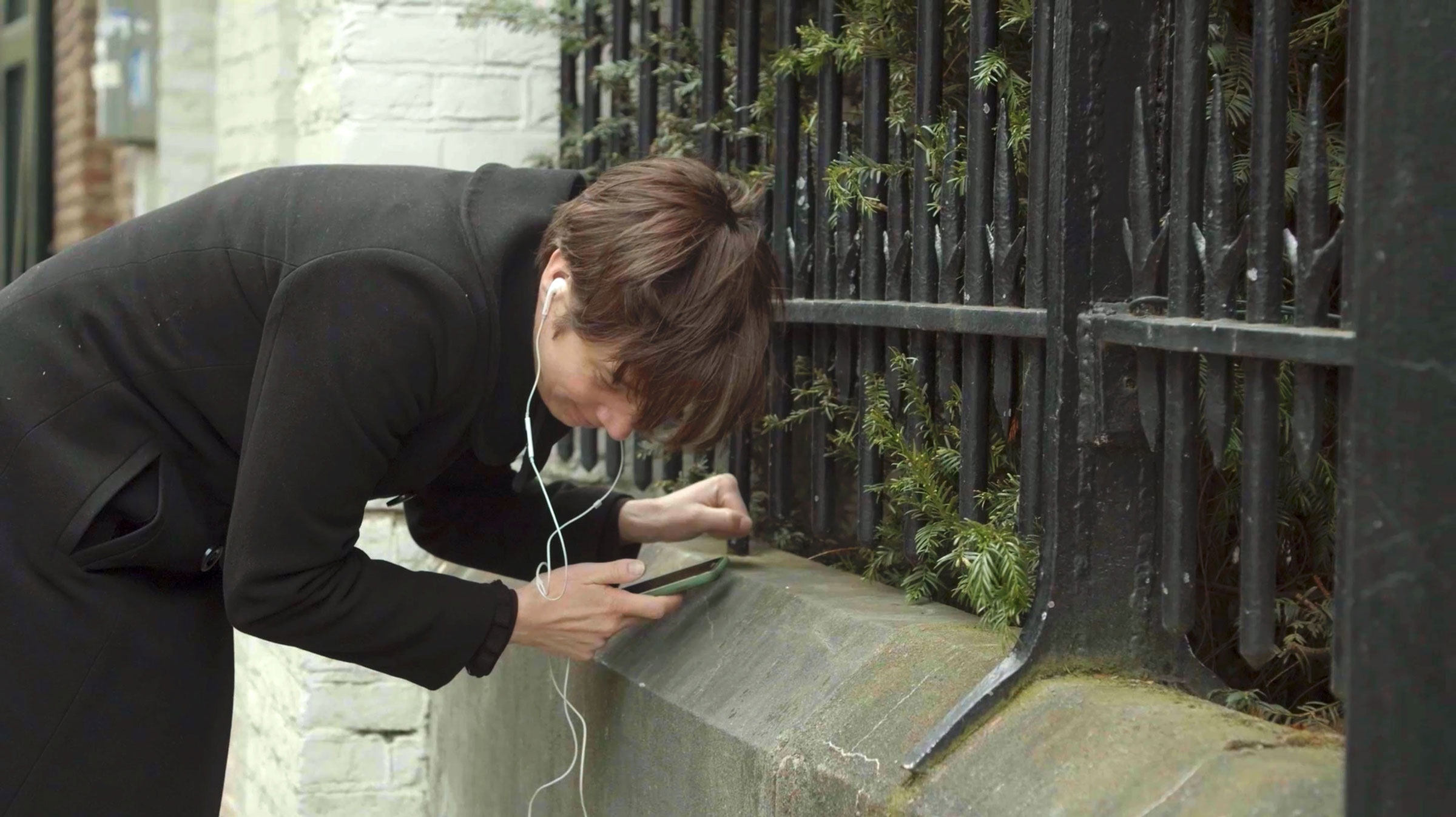
Contact and friction were the source of another sound archive created during Murmuring Matter, that is the Future Materials Sound Bank. This collaborative interactive project by artists Kim David Bots and Sumugan Sivanesan entailed a sonic reinterpretation of the material samples collection of the Future Materials Bank, gathered in the homonymous Lab of the Jan van Eyck Academie. The collection is typically approached from a visual standpoint, that considers the samples principally for their aesthetic and technical qualities. Bots and Sivanesan gathered a selection of the samples and invited the audience to engage with them sonically, playing on a keyboard made of clay tiles, and biocomposites, pinching PLA threads, pouring bio-pellets into metal bowls, and clattering eggshells vessels against each other, to name a few of the interactions. The sounds that emerged from both the materials out in the city and their sustainable 'future' counterparts, unveiled an invisible dimension, a sonic world, that coexists next to visually-constructed delineations and properties of these materials. This also subverted existing assumptions, expanding our material understanding and possibilities of engagement with them through a sort of synchronisation of rhythms.
Future Materials Sound Bank
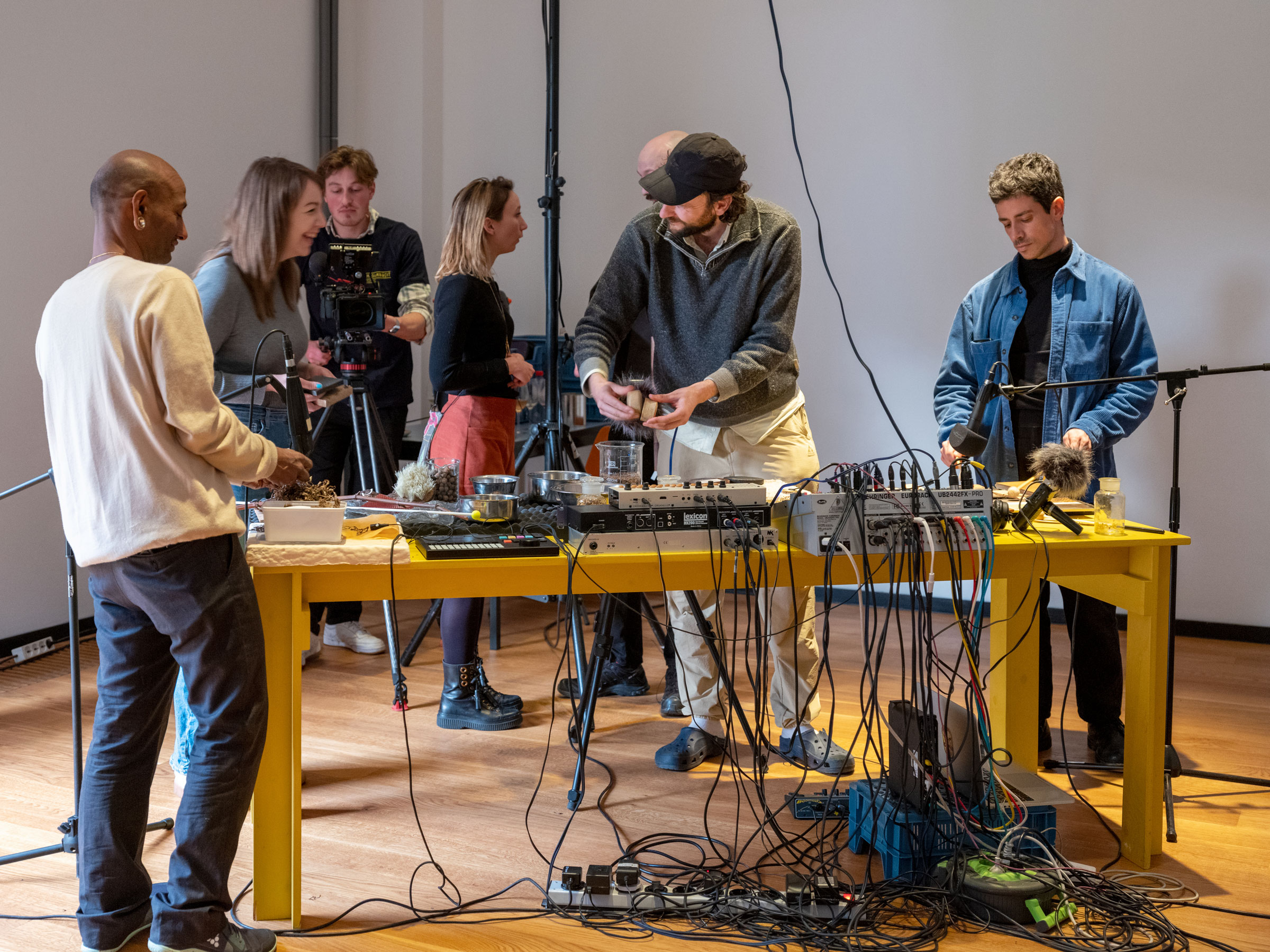
Rhythmic energies are invisible vibrational forces that pervade and shape the environment, unveiling subtle relations that bind the physical world with inner emotional and affective landscapes. In Murmuring Matter there were two moments in which interscalar vibrational connections manifested with particular intensity. The first moment was a somatic exercise guided by somatic therapist and philosopher Amy Auld Pennington and artist Eglė Budvytytė. Myofascial Murmuration entailed a somatic listening practice to initiate emergent, involuntary vibrations of the muscular and myofascial systems. This exercise was a form of therapeutic tremoring practice, called Tension/Stress/Trauma Release Exercise (TRE), which tonifies the nervous system, restores presence, and widens the ‘window of tolerance’ by fostering attention to comfort thresholds. TRE has been taught around the world in the wake of natural disasters to assist the body to integrate trauma, stress and uncertainty, and support recovery efforts.
Before starting the exercise, Pennington invited the conveners to think of the tremors of their bodies as vibrational energies that expand across bodies at multiple scales. Sharing this thought, Pennington referred to the devastating earthquake that only a few months before Murmuring Matter destroyed vast inhabited areas across Turkey and Syria. Yet, the atmospheric conditions during that evening offered further substance to Pennington's statement. Pennington and Budvytytė were guiding the participants into a meditative state when a thunderstorm started developing on the spring night. Outdoor atmospheric electric fields intensified as the sky grew darker and the night air became heavier with moisture. The rambling sound of thunder filled the room as human bodies started quaking. The timely coalescence of atmospheric and bodily vibration was so strong that it offered a physical experience of the resonances between geological, atmospheric, biotic, and emotional intensities.
The multiscalar relationality of vibrational intensities became particularly perceivable during the closing moment of the programme, titled Their movements, your absorption and organised collaboratively by artists Jonas Palekas and Cristina Flores Pescorán. It materialised as a dinner composed of two ingredients inspired by the Peruvian tradition: chicha (purple maize) and potato. The courses were served between fermented chicha bottles and maize kernels on ground-level tables, covered by an 11-metre long cloth dyed in chicha purple. Among the tables, flatscreens showed a series of videos featuring close-ups of leaves covered by dew, humid taste buds, and moving teeth. The artists invited the diners to slow down and pay attention to the messages brought by the food and interiorised through digestive systems: “Shhh… Do you hear what she is saying?” The nutrients of the food, the micro-organic communities, and the fermented drink resonated within the human bodies, speaking of the ways collective memories, eco-social traumas, and the related processes of healing, circulate through scales and apparent distant realities, bridging the physical, conceptual, and emotional dimensions of existence.
Their movements, your absorption
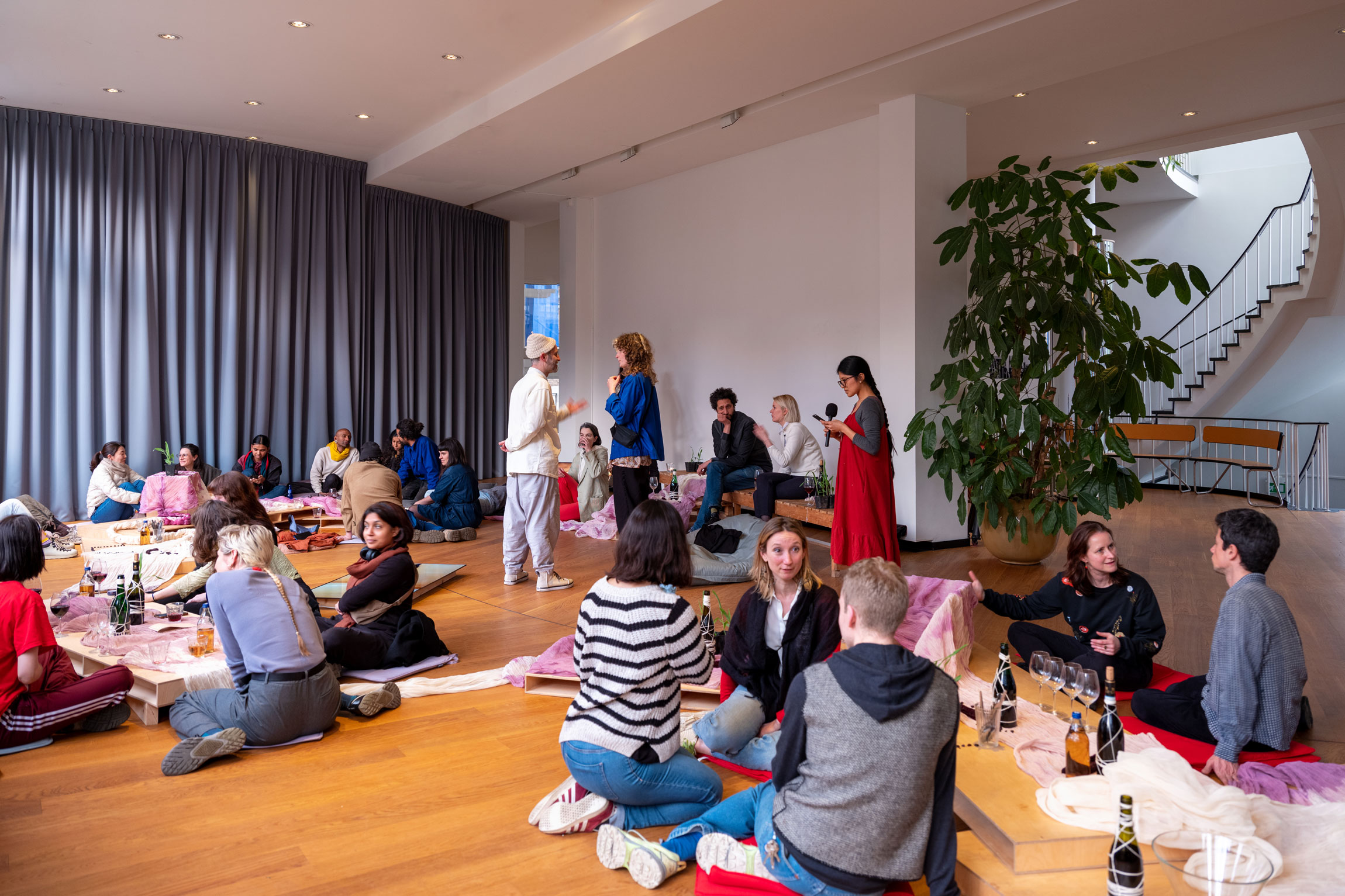
Conclusion
Through this excursus in diverse contributions of Murmuring Matter, we tried to stress the affordance of sonic and sound practices in responding to Isabelle Stengers’s Cosmopolitical Proposal. Deep listening and other modes of somatic attunement to the environment enabled the perception of entities and positionalities that escape cognitive apprehension and resist political representation. By immersing the participants in a polyphony of river, forest, and other materials murmurings, the programme challenged existing ways of understanding the world based on prehension, interpretation, and significance. MaasMosaMeuseMoûzeMaosMûce, A Ubiquitous Witness, and We are not the centre of the universebridged the verbal and the non-verbal, the analytical and the sensorial, the cognitive and the affective, advancing a notion of knowledge as an epistemic mode of being-in-the-world.13 This specific way of knowing, enhanced by sonic practices and sound works, has a political tenor inasmuch as it puts us in relation to the murmurings that exceed our vision, our cognitive apprehension, and our common sense.
Furthermore, sound works and other somatic practices have the power to unveil vibrational intensities and rhythmic relationalities that constitute our inner and outer worlds. Recording and sound practices such as Moving Materials with Our Ears and the Future Materials Sound Bank, somatic experiments such as Myofascial Murmuration, and the metabolic aesthetics of Their movements, your absorption reveal the relationalities between physical, cognitive, and affective dimensions of existence.
Artistic practices engaging with sound and deep listening such as the ones in Murmuring Matter react to Stengers' cosmopolitical proposal by suggesting more participatory, empathetic, and ethical ways of relating to the material world. By fostering intellectual curiosity and political affect, they challenge us to re-evaluate our place within the natural order and invite us to listen deeply to the vibrant symphony of life that surrounds us.
Text published in Kunstlicht Vol. 45, no. 1/2 Reverberant Ecologies: On the Relational Impact of Sonic Practices.
-
The epistemological erasures of Modernity have been discussed by many decolonial and post-colonial scholars, writers, and thinkers. See for instance: Boaventura de Sousa Santos, ed., "Another Knowledge Is Possible: Beyond Northern Epistemologies," Reinventing Social Emancipation: Toward New Manifestos, Volume 3 (London: Verso, 2008), xxxiv; Amitav Ghosh, The Nutmeg’s Curse: Parables for a Planet in Crisis (Chicago: The University of Chicago Press, 2021); and more recently Vanessa Machado de Oliveira, Hospicing Modernity: Facing Humanity’s Wrongs and the Implications for Social Activism (Berkeley, CA: North Atlantic Books, 2021).
-
Isabelle Stengers, “The cosmopolitical proposal,” in Making Things Public, Bruno Latour and Peter Weibel (eds.) (Cambridge: MIT Press, 2005), 994-1003.
-
Stengers, “Cosmopolitical proposal,” 996
-
Ibid.
-
Jacques Rancière, The Politics of Aesthetics, Gabriel Rockhil (eds.) l (London: Bloomsbury, 2014).
-
The event was part of the series Urgency Intensive, a yearly gathering the Jan van Eyck Academie organises to investigate the agency of art, design, and other creative practices in fostering more sustainable and responsible understandings of our relation towards the environment. The editions that preceded Murmuring Matter were constructed around the fictional institution of the IPACC - Intergovernmental Panel on Art and Climate Change. This speculative exercise served as a starting point for speculating on the agency, roles, and civic significance of arts and culture in relation to climate breakdown. Departing from the political exercise of the IPACC, Murmuring Matter took over the invitation of Stengers’ “Cosmopolitical Proposal” to expand the investigation on what cannot, does not, do not want to be included in political institutional structures.
-
Murmuring Matter gathered more than 25 practitioners with a diverse knowledge and practice from both within and outside of the artistic sphere, around a series of walks, talks, performances, workshops, screenings, dinners, and other somatic explorations. The sequence of activities was crafted to bridge the analytical and sensorial, the verbal and non-verbal, the cognitive and affective, in a collective inquiry that traversed multiple material and bodily scales.
-
Brady, Emily, Aesthetics of the Natural Environment (Edinburgh: Edinburgh University Press, 2003). For the notion of 'integrated aesthetic,' see: Burtner, Matthew. “Climate Change Music: From Environmental Aesthetics to Ecoacoustics,” South Atlantic Quarterly 116, no. 1 (2017): 145-161.
-
Voegelin, Salomé, “Sonic Possible Worlds,” Leonardo Music Journal 23, (2013): 89.
-
Anna L. Tsing, Heather Anne Swanson, Elaine Gan, and Nils Bubandt, eds., Arts of Living on a Damaged Planet (Minneapolis: University of Minnesota Press, 2017), G1.
-
Rancière, The Politics of Aesthetics, 2014.
-
Brandon LaBelle, Sonic Agency: Sound and Emergent Forms of Resistance (London: Goldsmiths Press, 2018), 2.
-
Lorraine Code, Ecological Thinking. The Politics of Epistemic Location(Oxford: Oxford University Press, 2006), 20.